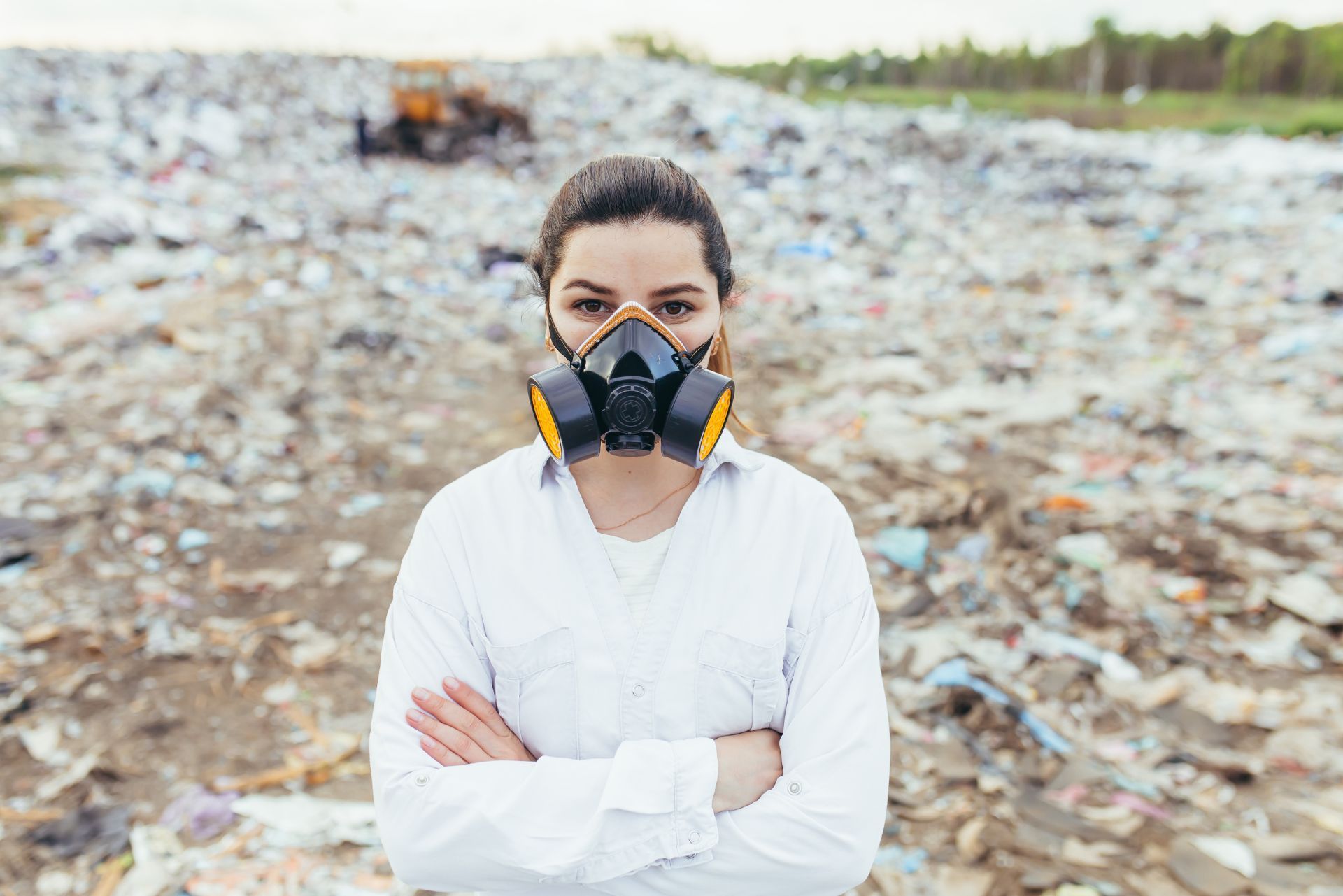
Top 3 Recommended Policies

Pollution insurance is a crucial aspect of environmental risk management, particularly for businesses operating in Texas. With its vast industrial landscape, Texas faces unique environmental challenges that necessitate a comprehensive understanding of pollution insurance. This article delves into the intricacies of pollution insurance in Texas, covering its importance, types, coverage options, and the regulatory landscape.
Understanding Pollution Insurance
Pollution insurance is designed to protect businesses from the financial repercussions of pollution-related incidents. These incidents can stem from various sources, including industrial operations, transportation of hazardous materials, or even everyday business activities. The coverage typically includes costs associated with cleanup, legal fees, and damages resulting from pollution claims. In addition to these standard protections, pollution insurance can also cover the costs of regulatory compliance, helping businesses navigate the complex landscape of environmental laws and regulations that vary significantly by state and locality.
Why Pollution Insurance is Important
In Texas, the risk of pollution incidents is heightened due to the state's extensive oil, gas, and chemical industries. A single incident can lead to significant financial losses, not only from cleanup costs but also from potential lawsuits and regulatory fines. Pollution insurance provides a safety net, ensuring that businesses can recover and continue operations without facing crippling financial burdens. Moreover, the increasing frequency of extreme weather events, such as hurricanes and floods, can exacerbate the risk of pollution incidents, making it even more crucial for businesses in vulnerable areas to secure adequate coverage.
Key Benefits of Pollution Insurance
One of the primary benefits of pollution insurance is peace of mind. Business owners can focus on their operations, knowing they are protected against unforeseen environmental liabilities. Additionally, having this coverage can enhance a company's reputation, demonstrating a commitment to environmental responsibility. Furthermore, many clients and partners now require proof of pollution insurance before entering into contracts, making it a vital component of business operations. The ability to showcase this insurance can also open doors to new business opportunities, as companies that prioritize environmental stewardship are often more attractive to socially conscious consumers and investors. Additionally, pollution insurance can provide access to expert resources and advice on risk management, helping businesses implement best practices to minimize their environmental impact and reduce the likelihood of incidents occurring in the first place.

Types of Pollution Insurance
There are several types of pollution insurance policies available, each tailored to meet the specific needs of different industries and operations. Understanding these types can help businesses choose the right coverage for their unique circumstances.
General Liability Pollution Insurance
This type of policy is often included as an endorsement to a standard general liability insurance policy. It covers third-party claims for bodily injury or property damage caused by pollution incidents. While it offers some level of protection, it may not cover all pollution-related risks, making it essential for businesses to assess their specific needs. For instance, companies in the construction sector might find this coverage insufficient, as they may face unique challenges related to soil contamination or hazardous material handling that require more specialized insurance solutions.
Environmental Impairment Liability (EIL) Insurance
EIL insurance is specifically designed to address the unique risks associated with environmental pollution. It covers a broader range of incidents, including cleanup costs, legal defense expenses, and damages related to pollution claims. This type of policy is particularly beneficial for businesses involved in manufacturing, waste management, and other industries with significant environmental exposure. Additionally, EIL insurance can also offer coverage for historical pollution that may have occurred prior to the policy's inception, providing an extra layer of security for businesses that may be held liable for past environmental impacts.
Site-Specific Pollution Insurance
For businesses operating on a specific site,
site-specific pollution insurance provides tailored coverage for pollution incidents that may occur at that location. This policy is ideal for companies with known environmental risks or those operating in areas with a history of pollution issues. It ensures that businesses are adequately protected against site-related liabilities. Furthermore, this type of insurance often includes provisions for ongoing monitoring and assessment of environmental conditions, allowing businesses to proactively manage risks and comply with regulatory requirements. By investing in site-specific coverage, companies can not only safeguard their financial interests but also demonstrate their commitment to environmental stewardship and corporate responsibility.
When selecting a pollution insurance policy, it is essential to understand the various coverage options available. These options can significantly impact the overall protection a business receives. Each policy can be tailored to meet the specific needs of a business, taking into account factors such as industry type, location, and potential exposure to environmental risks. Understanding these nuances can help businesses make informed decisions that align with their operational goals and risk management strategies.
Cleanup Costs
Cleanup costs are often one of the most significant expenses associated with pollution incidents. Pollution insurance typically covers the costs of investigating and remediating contaminated sites, ensuring that businesses can address environmental issues without incurring exorbitant expenses. This coverage can also extend to preventive measures, such as regular environmental assessments and monitoring programs, which can help identify potential issues before they escalate into costly incidents. By investing in these proactive strategies, businesses not only safeguard their financial interests but also demonstrate their commitment to environmental stewardship.
Legal Defense Costs
In the event of a pollution-related lawsuit, legal defense costs can quickly accumulate. Pollution insurance often includes coverage for legal fees associated with defending against claims, providing businesses with the necessary resources to mount a robust defense without jeopardizing their financial stability. Additionally, some policies may offer access to legal experts who specialize in environmental law, ensuring that businesses receive informed guidance throughout the legal process. This can be particularly beneficial in navigating complex regulations and potential liabilities, allowing businesses to focus on their core operations while managing legal challenges effectively.
Third-Party Liability
Third-party liability coverage protects businesses against claims made by individuals or organizations affected by pollution incidents. This coverage can include bodily injury, property damage, and even economic losses resulting from pollution-related activities. Having this protection is vital for businesses that interact with the public or operate near residential areas. Furthermore, many policies also provide coverage for claims arising from gradual pollution events, which can be particularly challenging to detect and address. By ensuring comprehensive third-party liability coverage, businesses can mitigate the risks associated with their operations and foster trust within the communities they serve, ultimately enhancing their reputation and long-term viability.
The Regulatory Landscape in Texas
Understanding the regulatory environment surrounding pollution insurance in Texas is essential for businesses. The state has established various laws and regulations to manage environmental risks and ensure compliance. With the increasing focus on sustainability and environmental responsibility, businesses must navigate this complex landscape to protect themselves from potential liabilities.
Texas Commission on Environmental Quality (TCEQ)
The TCEQ is the primary regulatory body overseeing environmental protection in Texas. It enforces regulations related to air and water quality, waste management, and hazardous materials. Businesses operating in Texas must comply with TCEQ regulations, and failure to do so can result in significant fines and penalties. Pollution insurance can help mitigate the financial impact of regulatory compliance issues. Furthermore, the TCEQ conducts regular inspections and audits, which means that businesses must maintain thorough records and documentation to demonstrate compliance. This proactive approach not only helps avoid penalties but also fosters a culture of environmental stewardship within organizations.
Federal Regulations
In addition to state regulations, businesses in Texas must also adhere to federal environmental laws, such as the Clean Air Act and the Clean Water Act. These laws set strict standards for pollution control and management. Companies must ensure they are in compliance with both state and federal regulations, and having pollution insurance can provide additional protection against potential liabilities arising from regulatory violations. Moreover, the Environmental Protection Agency (EPA) often collaborates with state agencies like the TCEQ to implement initiatives aimed at reducing pollution and promoting sustainable practices. This partnership can result in new regulations that businesses must adapt to, making it crucial for them to stay informed about changes in the regulatory landscape.
Environmental Risk Assessment
Conducting an environmental risk assessment is crucial for businesses operating in Texas. This assessment helps identify potential pollution risks and informs the development of appropriate risk management strategies. Many insurance providers require a risk assessment before issuing a pollution insurance policy, ensuring that businesses understand their exposure and have adequate coverage in place. Additionally, these assessments can reveal opportunities for operational improvements that not only enhance compliance but also lead to cost savings. By identifying areas where pollution can be minimized or eliminated, businesses can implement best practices that align with both regulatory requirements and corporate sustainability goals, ultimately benefiting their bottom line and the environment.
Choosing the Right Pollution Insurance Policy
Selecting the right pollution insurance policy requires careful consideration of various factors. Businesses must assess their specific needs, industry risks, and regulatory requirements to find the most suitable coverage.
Assessing Business Needs
Each business has unique risks associated with pollution. Conducting a thorough assessment of operations, potential pollution sources, and historical incidents can help identify specific coverage needs. This assessment should also consider the geographic location of the business and any local environmental concerns. For instance, a manufacturing facility located near a water body may face stricter regulations and higher risks of water pollution, necessitating a more comprehensive policy. Additionally, businesses should evaluate their supply chain and the environmental practices of their partners, as these can also impact their overall risk profile.
Consulting with Insurance Professionals
Working with insurance professionals who specialize in pollution insurance can provide valuable insights and guidance. These experts can help businesses navigate the complexities of pollution insurance, ensuring they select a policy that meets their needs and complies with regulatory requirements. Moreover, they can offer tailored advice based on industry trends and emerging risks, such as climate change impacts or evolving regulations. By leveraging their expertise, businesses can better understand the nuances of coverage options, including third-party liability and cleanup costs, which can be crucial in the event of an incident.
Reviewing Policy Terms and Conditions
Before finalizing a pollution insurance policy, businesses should carefully review the terms and conditions. Understanding coverage limits, exclusions, and the claims process is essential to avoid surprises when a pollution incident occurs. Businesses should also inquire about any additional endorsements or coverage options that may be available. For example, some policies might offer coverage for business interruption due to pollution events, which can be vital for maintaining operations during recovery. It’s also wise to consider the insurer's reputation and claims handling process, as a responsive and supportive insurer can make a significant difference in the aftermath of a pollution incident.
Staying Informed on Regulatory Changes
In addition to evaluating insurance policies, businesses should remain vigilant about regulatory changes that could affect their pollution risk and insurance needs. Environmental regulations can evolve rapidly, influenced by new scientific findings or shifts in public policy. Staying informed through industry newsletters, workshops, and regulatory updates can help businesses anticipate changes and adjust their insurance coverage accordingly. Furthermore, proactive engagement with local environmental agencies can provide insights into upcoming regulations and community expectations, which can be beneficial in shaping a comprehensive risk management strategy.

Common Myths About Pollution Insurance
Despite its importance, several myths surround pollution insurance that can lead to misunderstandings among business owners. Addressing these myths can help clarify the role of pollution insurance in risk management.
Myth 1: Pollution Insurance is Only for Large Corporations
Many people believe that pollution insurance is only necessary for large corporations or businesses in high-risk industries. However, pollution incidents can occur in any business, regardless of size or industry. Small businesses, in particular, may be vulnerable to pollution claims, making coverage essential for their protection. For example, a small manufacturing facility may inadvertently release harmful substances into the environment, leading to costly cleanup efforts and legal liabilities. Such incidents can threaten the very existence of a small business, highlighting the need for appropriate insurance coverage to mitigate these risks.
Myth 2: General Liability Insurance is Sufficient
Another common misconception is that general liability insurance covers all pollution-related risks. While general liability policies may provide some coverage, they often have significant limitations. Pollution insurance is specifically designed to address the unique risks associated with environmental incidents, making it a necessary addition to a comprehensive insurance portfolio. In fact, many general liability policies include exclusions for pollution-related claims, which can leave businesses exposed to substantial financial losses if a pollution incident occurs. Therefore, understanding the nuances of different insurance types is crucial for business owners aiming to protect their assets effectively.
Myth 3: Pollution Insurance is Too Expensive
Some business owners may avoid obtaining pollution insurance due to perceived costs. However, the potential financial impact of a pollution incident can far exceed the cost of insurance premiums. Investing in pollution insurance can ultimately save businesses from devastating financial losses, making it a wise investment in risk management. Moreover, many insurers offer tailored policies that can fit various budgets, allowing businesses to find coverage that meets their specific needs without breaking the bank. Additionally, some companies may qualify for discounts or incentives for implementing environmentally friendly practices, further offsetting the costs of obtaining pollution insurance.
Conclusion
Pollution insurance is an essential component of risk management for businesses operating in Texas. With its unique environmental challenges and regulatory landscape, understanding the intricacies of pollution insurance is crucial for protecting financial interests and ensuring compliance. By assessing specific needs, consulting with insurance professionals, and selecting the right coverage, businesses can safeguard themselves against the potential consequences of pollution incidents. As environmental concerns continue to rise, having adequate pollution insurance will not only protect businesses but also contribute to a more sustainable future.
Contact Us

